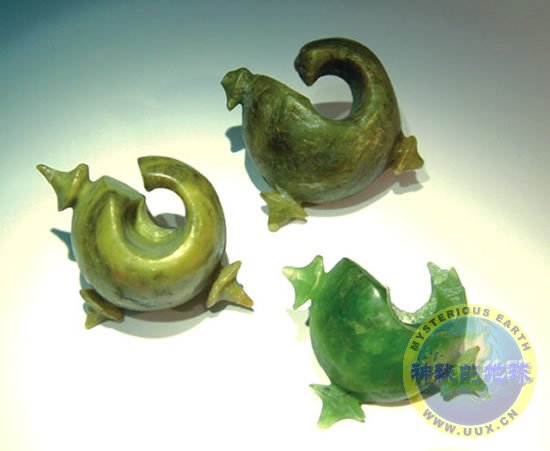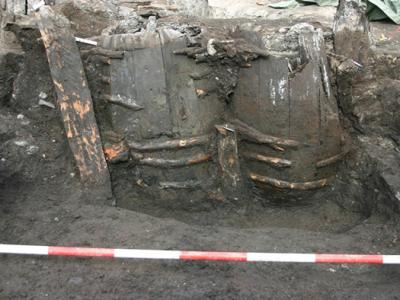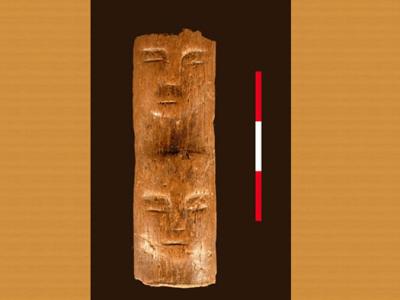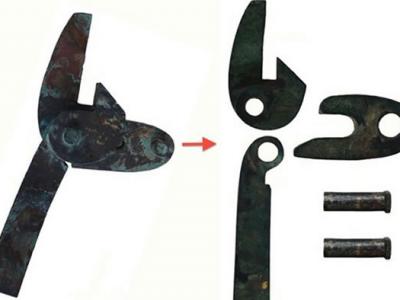Jade Earrings Reveal Ancient S.E. Asian Trade Route
Similar "lingling-o" earrings found in Vietnam (left) and the Philippines (both right) are made of a distinctive type of jade from a single site in Taiwan, a new study shows.
The presence of this jade at ancient burial sites across Southeast Asia suggests that the region had one of the largest marine trading networks of prehistoric times.
Photograph courtesy PNAS/National Academy of Sciences © 2007
Carolyn Barry in Sydney, Australia
for National Geographic News
November 20, 2007
Jade jewelry found near ancient burial sites across Southeast Asia has revealed one of the largest marine trading networks of prehistoric times, a new study says.
Mineral analysis shows that most of nearly 150 sampled artifacts dated as far back as 3000 B.C. can be traced back to a single site in Taiwan (see map), about 190 miles (120 kilometers) off the coast of mainland China.
This indicates that the small island supplied much of Southeast Asia with a unique variety of the semiprecious stone via a 1,800-mile (3,000-kilometer) trade route around the South China Sea.
(Related news: "Jade Axes Proof of Vast Ancient Caribbean Network, Experts Say" [June 12, 2006].)
The existence of such a vast trading network shows that these populations had developed sophisticated seafaring vessels and had extensive communication much earlier than previously believed.
"I think [ancient Southeast Asian cultures] were more advanced than we thought," said study co-author Peter Bellmore, an archaeologist at the Australian National University (ANU) in Canberra.
"These are very widespread connections. We really had no idea that this jade from Taiwan was traveling so far."
Traveling Craftsmen
The researchers studied 144 jade artifacts from 49 locations in modern-day Vietnam, Thailand, Malaysia, and the Philippines.
Most of the objects had been found next to prehistoric skeletons buried in jars or on the sides of skulls, suggesting that they were earrings belonging to the wealthier members of society.
"They were clearly being worn," Bellmore said.
Specifically, the team focused their study on two types of distinctive jade ornaments: three-pointed "lingling-o" earrings and two-headed animal pendants that were popular from 500 B.C. to A.D. 500.
Using high-powered scanning electron microscopes, the scientists measured the relative amounts of iron and magnesium and the presence of small specks of zinc chromite in the jade.
These chemical signatures showed that 116 artifacts found at 38 different locations originated from the Fengtian jade deposit in eastern Taiwan.
The results appear in this week's issue of the Proceedings of the National Academy of Sciences.
Researchers are currently working to map the origins of the remaining 28 artifacts.
"Archaeologists have noticed the jade artifacts had similar styles and shapes" across different Asian regions since the 1940s, said lead study author Hsiao-Chun Hung, also at ANU.
"But we never thought it was from the same source until we tested it."
So far only a single jade earring similar to those used for the study has been found in Taiwan.
But samples from Vietnam and Thailand include cast-off pieces and incomplete earrings found at what scientists believe are workshop sites.
In addition, jade is a very hard mineral, so crafters would need sophisticated carving skills and tools to shape such ornate items.
Only a few highly skilled craftsmen would have the expertise, Bellmore said.
Most likely, these craftsmen exported the jade as a raw material and then manufactured it into jewelry locally, Bellmore said.
"The jade comes from Taiwan, but a lot of artifacts are not made in Taiwan."
Nuanced Understanding
The study is "an important contribution to a matter that deserves more attention: the navigational skills of early Southeast Asian societies," said anthropologist Charles Higham of the University of Otago in New Zealand.
Experts often focus too much on the influence that Chinese and Indian populations had on the cultural advances of Southeast Asian societies, he said.
"Ancestors of the Southeast Asian people were able to cross into Australia over 40,000 years ago over open sea with no land visible, so why were they not also capable of sailing to India and back to trade?" he said.
"This paper illustrates that such movement was possible."
Archaeologist Miriam Stark of the University of Hawaii at Manoa said she is cautiously optimistic about the research.
"This study provides an important springboard for studying chemical compositional sources within Southeast Asia," she said.
"Chemical patterning provides some of the first empirical evidence for a South China Sea interactional network."
Mapping the sources of jade artifacts, she said, is therefore "essential to develop a more nuanced understanding of political economies and social networks in the ancient Southeast Asian world."












